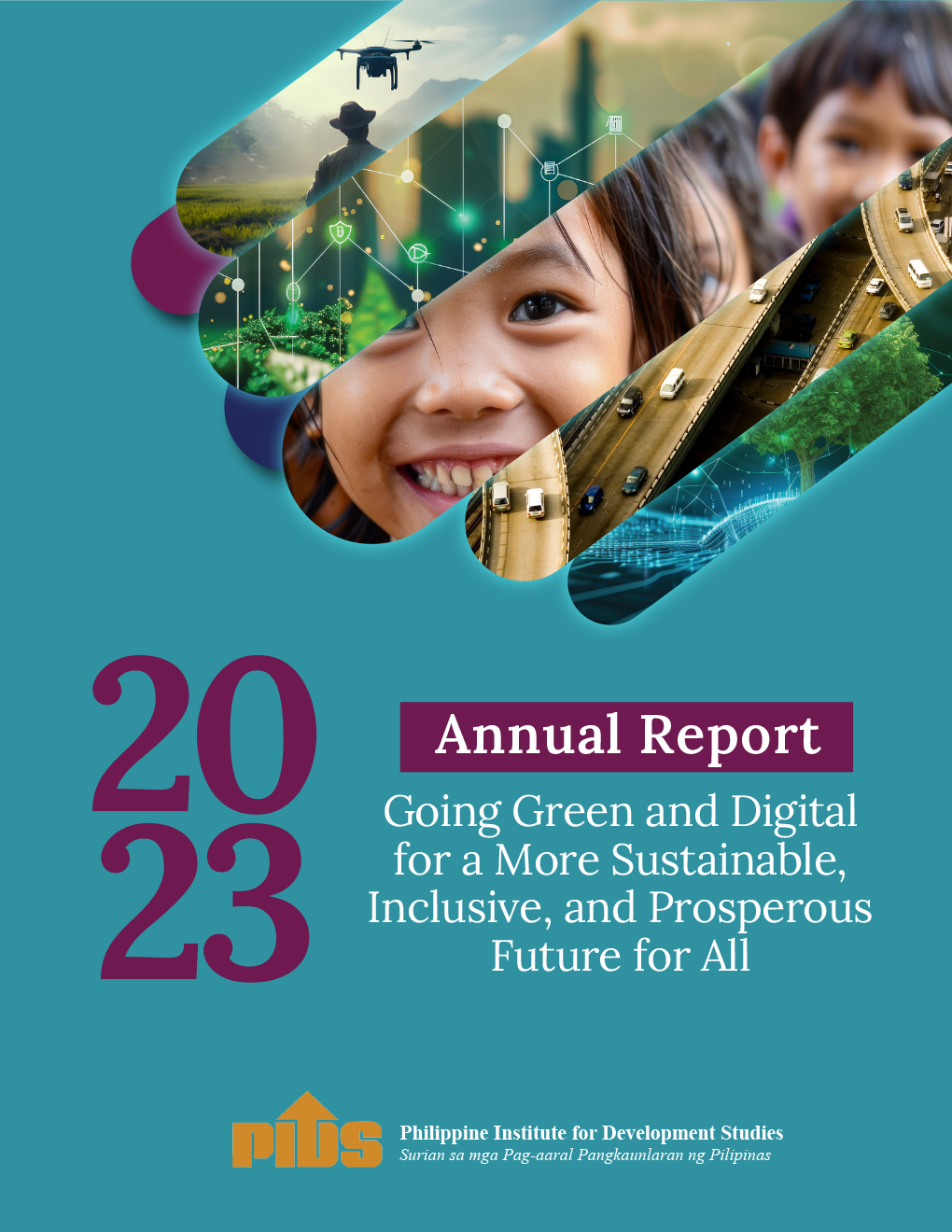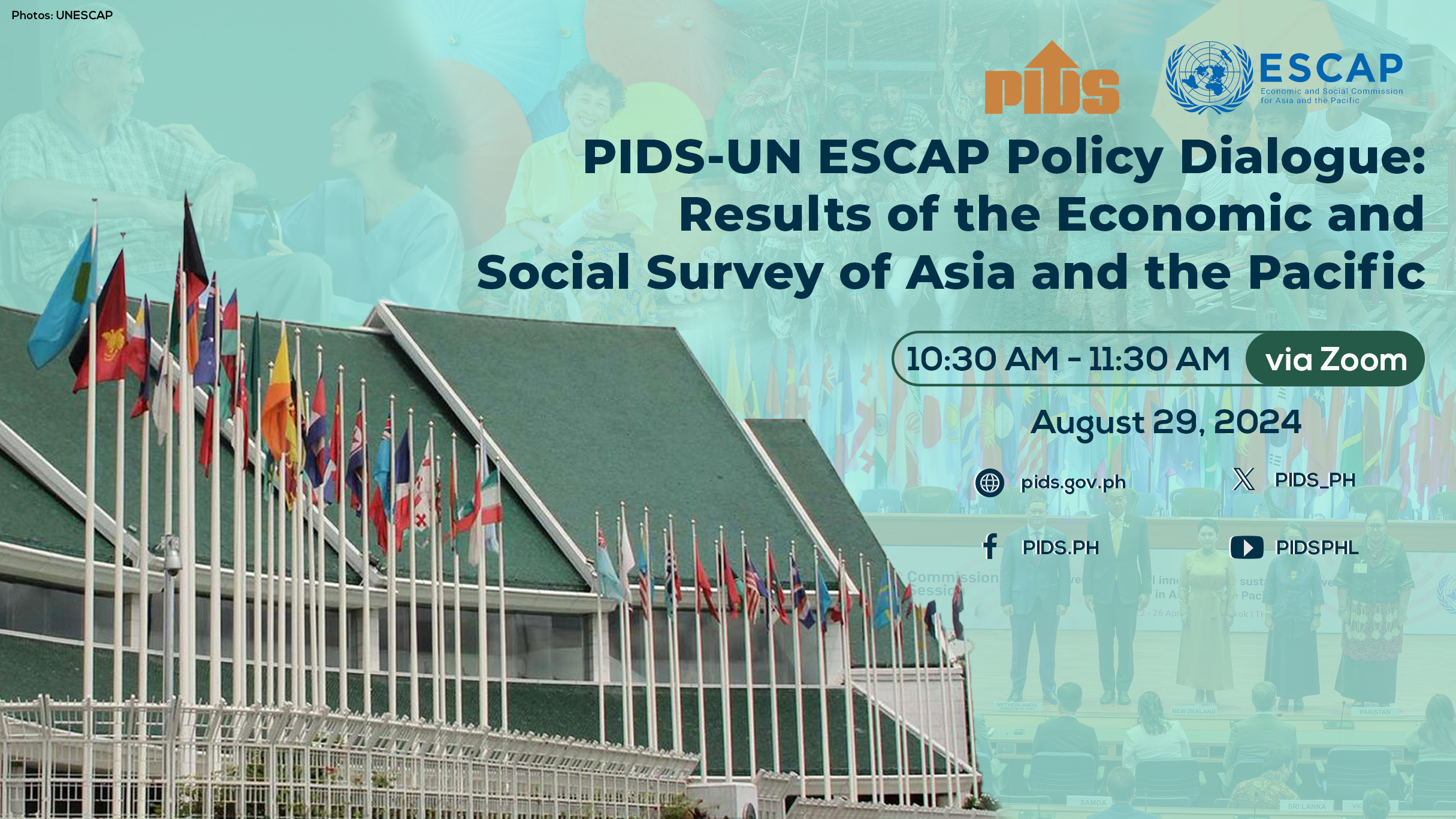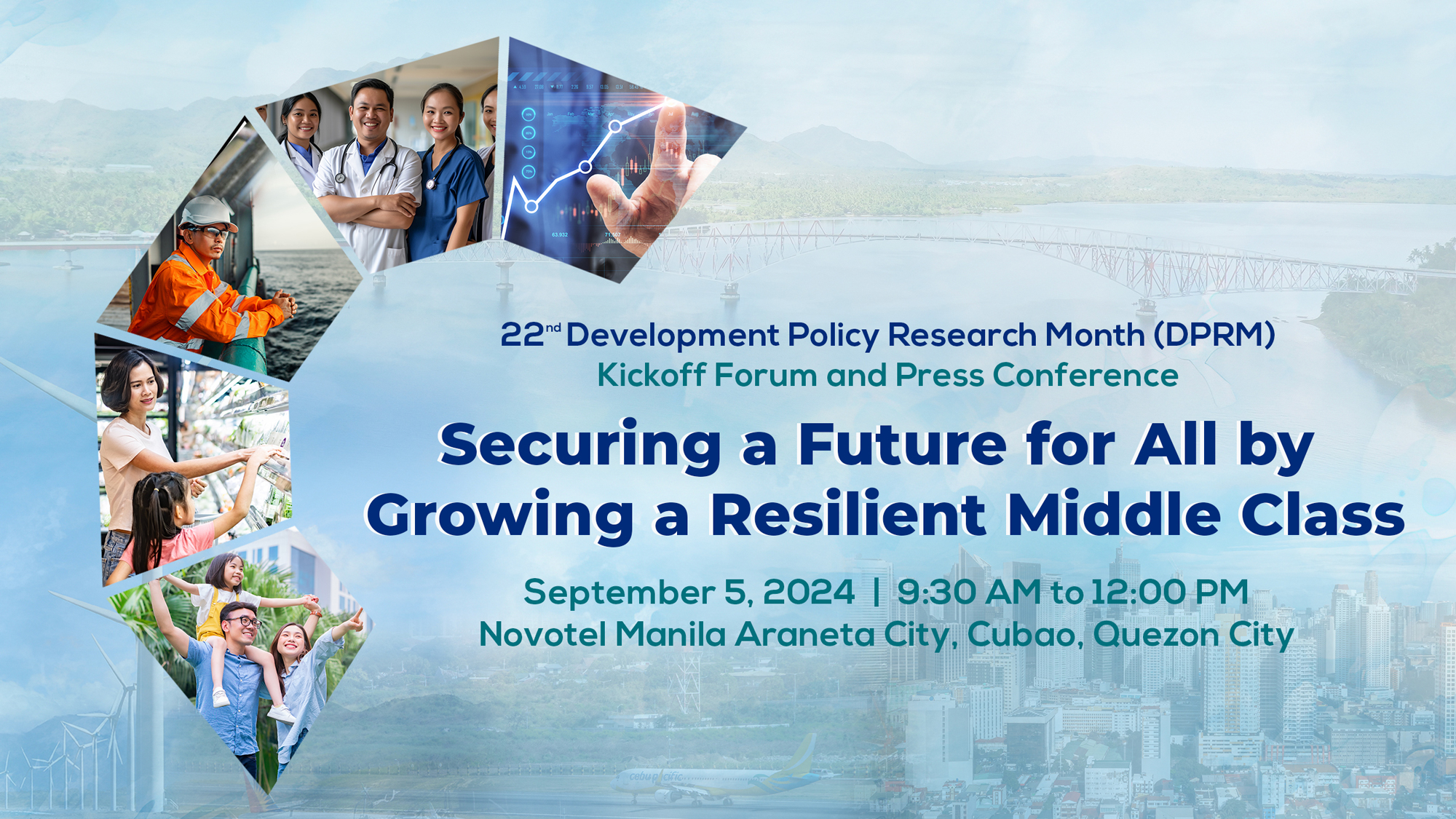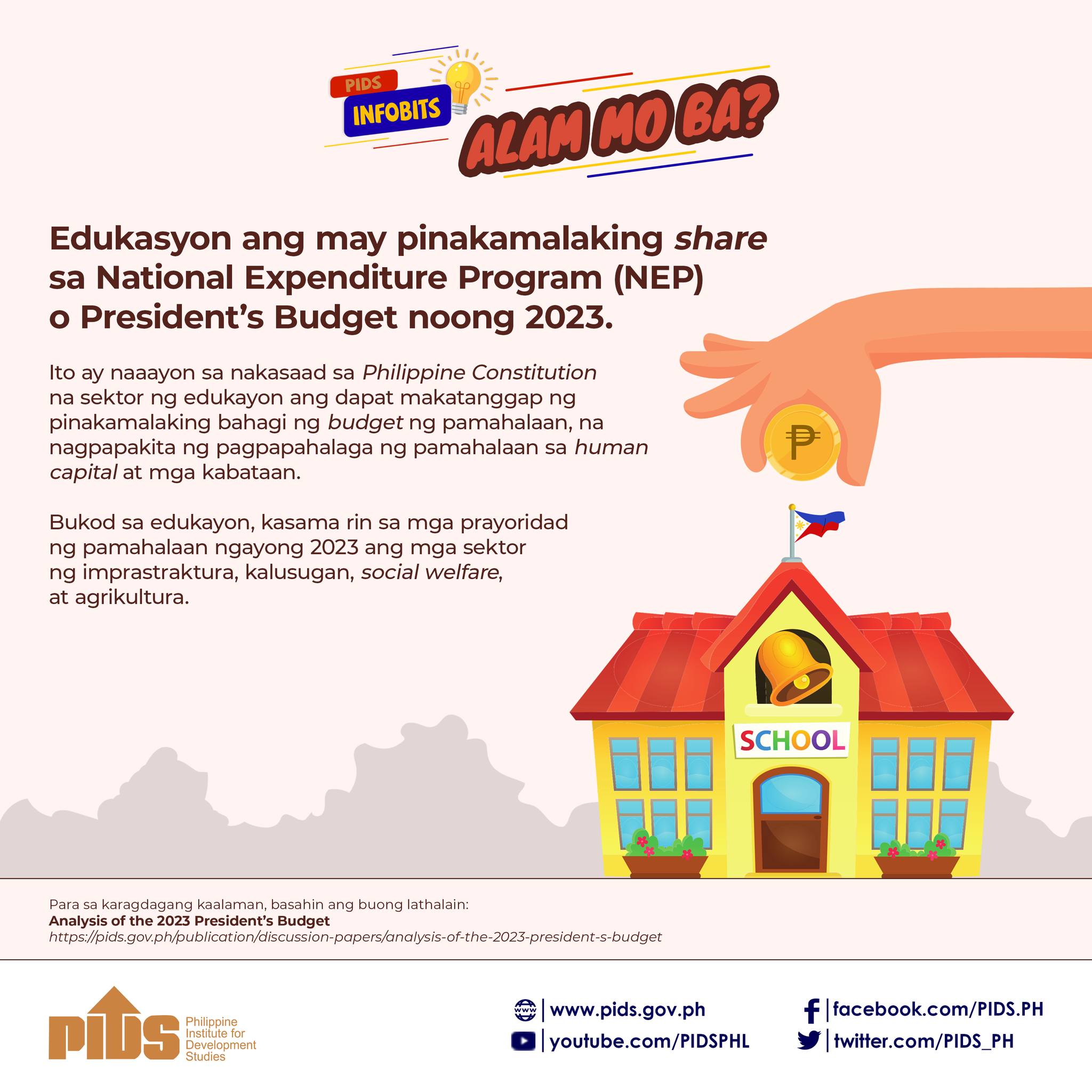'Our country is in the midst of a dramatic turnaround in every sector, and we are intent on continuing this trend and making certain that each and every Filipino enjoys the full dividends of progress'
Several times a year, the World Economic Forum gathers leaders and specialists from all around the world — heads of state, academics, and entrepreneurs alike — in pursuit of a single, broad-based vision: "to improve the state of the world.” I cannot overstate our country’s gratitude for the opportunity to host all of you here, and it gives me great pride to say, on behalf of my countrymen, indeed: Welcome to the Philippines. Over the course of your visit, I am hopeful that you can make time in your busy schedules to visit our tourist attractions and historical landmarks, which make us one of the most fun countries on Earth. Above that, however, I am also very eager for you to experience firsthand the passion, the patriotism, and the kindness of our country’s greatest resource: the Filipino people.
Throughout our history, the great turning points that have allowed us to achieve national redemption and progress have been made possible by the collective efforts of the Filipino people–at times, despite the worst efforts of our leaders. Some of you may remember: Decades ago, our country was suffering from the cancer of tyranny and oppression that characterized martial rule.Before that period, the Philippines was always being compared to Japan–whether in terms of our economy, or even in sports. However, during the martial law years,our fate became dependent on the will and the whims of a dictator who put himself ahead of all other considerations.
Ultimately, it was the Filipino people who came together to unshackle our country from the chains of totalitarianism. We came together in a peaceful revolt, in what would be known by history as the People Power Revolution, and eventually, we overthrew the dictator. It was the Filipino people who then raised my mother to the seat of power, and gave her the confidence and the political capital to finally plant the seeds of recovery and return of democracy to the Philippines after decades of corruption and neglect.
In 2010, it was once again the collective efforts of our people that helped me get elected me into office, after they took a stand, and firmly decided to turn their back on almost a decade of corruption and impunity–a decade of lost opportunities. My countrymen flocked to the voting stations to vote for the simple but profound idea that was the backbone of our campaign, and that is where there is no corruption, there will be no poverty.
To this day, the Filipino people provide the strength to sustain this effort. That is why when many of you have praised the achievements of the Philippines, we always point out that the pursuit of large-scale reforms in every aspect of governance is the achievement of the Filipino people. They made the goal of achieving inclusive growth doable, and it is also they who will make it irreversible.
Dismantling culture of corruption
For the past four years, through the unwavering support of our people, we have enacted reform after reform. We overhauled systems that were prone to abuse. We reformed the way we do our budget–consulting as many stakeholders as possible, crafting the budget from the grassroots up, and implementing what we call the zero-based budgeting, which makes sure that all government spending will have corresponding and tangible benefits for our people. We have also empowered our people to take a more active role in governance by, for instance, putting up websites like Pera ng Bayan and Budget ng Bayan, which translate to "the People’s Money” and "the People’s Budget,” respectively. Through these sites, our people can report erring officials to the Department of Finance and its attached agencies, and they can also directly see how the government is spending taxpayer money. We likewise reworked the formula for success in business — from one that required connections to influential people, to one that gives value to hard work and innovation above all else.
We pursued all those who committed wrongdoing — regardless of their power, wealth, or influence. As you may have guessed, tangling with these very wealthy individuals and sectors with vested interests was not an easy task. But those in our administration were not shaken: Dismantling the culture of corruption was a promise we made to the people. If we truly wanted to improve the lives of our people, we could not possibly shirk away from this challenge. We had to take on all those who had a misplaced sense of entitlement — who believed that they had more rights than their fellow Filipinos.
So, we went after every individual who committed wrongdoing, and look at the results: My predecessor is now undergoing hospital arrest as she undergoes two serious charges, with another being evaluated by the Ombudsman. The Congress and the Senate removed a Chief Justice from office for failing to declare over 98 percent of his assets in his Statement of Assets and Liabilities and Net Worth contrary to our constitution and our laws. Our efforts were not limited to those in the highest positions; we want to institute integrity throughout the bureaucracy. This is why, through programs called Revenue Integrity Protection Services (RIPS), Run After The Smugglers (RATS), and Run After Tax Evaders (RATE), we have filed a total of 487 cases against those who allegedly committed offenses as of April 15, 2014.
These reforms, along with countless others, naturally expanded the resources available to government. The question was: What do we do with these resources we have freed up? To everyone in our administration, the answer was very obvious: We had to invest in our greatest assets — and that, once again, was the Filipino people.
This is why we undertook the large-scale expansion of our conditional cash transfer program. In the span of four years, we have more than quadrupled its budget. The program that we inherited covered just 800,000 families, or roughly around four percent of the population; now, we are assisting around 4.3 million families, or about 22 percent of the population and this constitutes the poorest of the poor. Through this initiative, we are incentivizing keeping children in school, because that is the primary condition of the conditional cash transfer.
Furthermore, just recently, we expanded the program in yet another aspect: Now, it covers families with children up to 18 years of age. We believe this will magnify the impact of this program: Based on studies conducted by the Philippine Institute of Development Studies, the income of high school graduates is around 40 percent higher than those who only finish elementary school. The Conditional Cash Transfer Program ticks all the boxes: we give those in the margins the resources to meet their needs in the short-term, while making sure that they remain healthy, and that their children acquire the skills to become a productive part of the workforce.
Of course, the principle behind the CCT dovetails with the strategic investments we have made in education to enhance the skillsets of the next generation. Since taking office, our administration has cleared the accumulated backlog in classrooms, books, and chairs, which means that our students can go to school with the minimum expectation that they will have everything they need to succeed. Just to give you an idea of the magnitude of this achievement: In July of 2010, when we took office, we found that in order to accommodate all our students in our public schools, we needed to build 66,800 classrooms. The national budget, conceivably, could only afford to build around 8,000 classrooms per year. This meant that, if we continued business as usual, we would be leaving my successor with a backlog of almost 20,000 classrooms.
Clearly, this was unacceptable. And yet, despite these unfavorable conditions, our Education Secretary, my honorable brother, Armin Luistro stepped up to the challenge. By the end of 2013, he delivered not just 66,800 classrooms, but 66,813. He likewise erased the 2.5 million backlog in chairs and tables and the 61.7 million backlog in textbooks. Through a convergence of efforts, we have also replaced the ten year basic education program with with what we call the K to 12 program, which will give our students more time to learn and understand lessons that will better prepare them to enter the workforce. This program also aligns our education system with international standards, which is necessary for us to seize the opportunities that will arise from regional and global economic integration.
Our efforts in the field of health have also been massive. During our time in office, we have nearly tripled the budget of our Department of Health; this has allowed us to significantly increase the percentage of our population enrolled in PhilHealth, our national health insurance system, while also expanding the available services, as well as the list of diseases that can be treated for free especially for the bottom quintile. Nowadays, the poorest among our countrymen can simply walk inside any government hospital, show their PhilHealth card, and receive the treatment they need free of charge.
Fun destination
We are aware, however, that inclusive growth cannot be achieved simply by delivering to our people the services they rightfully deserve. Government must also actively find ways to create opportunities for the people. With this in mind, we have been hard at work to promote the Philippines as the most fun destination in the world, knowing full well that tourism is a sector that achieves inclusivity almost instantly–because even those without extensive training or education can take the jobs it generates. The results are clear: From 2001 to 2009, the term of my predecessor, the average annual growth of international tourists arrivals was at 5.1 percent; under our watch, from 2010 to 2013, this number grew to 11.6 percent. Considering that, on average, every international tourist spends almost a thousand dollars in the Philippines, the impact of our tourism efforts on our local economies has been nothing less than profound.
Another specific example: Armed forces are not usually seen as productive factors in any economy, but in our case, we want inclusive growth to reach every sector of society, including even our personnel in the security sector. To this end, we have been transforming idle land in certain military camps into plantations of bamboo, cacao, and palm oil, among others, to create more livelihood opportunities for our soldiers and retirees.
There is a simple idea behind all these initiatives: Our people are the be all and end all of this government, and we are not content with waiting for the benefits of growth to just trickle down the social pyramid. This is why, from the beginning of our term, most of our efforts have been targeting the poorest of the poor.
This year, however, we have expanded the scope of our efforts and are now likewise targeting those who are deemed "near poor,” or those who are one catastrophic illness or one natural disaster away from going below the poverty threshold. Our goal: To push them further and further away from the poverty line, and to empower them to improve their own lots in life.
All these results were made possible not simply by a committed government, but also, and more importantly, by the Filipino people. It has been their participation, their trust, and their confidence that has redounded to a government–and a country–that once again works for the people.
The result of all our collective efforts in the Philippines is what you see now: One instilled with a newfound optimism, one that believes in government’s capacity to help its people, and one that is widely considered to be among the world’s emerging economies.
Good economics
We have always said that good governance is good economics, and the results of our reforms on the economic end are proving us right. In 2013, our economy grew by 7.2 percent — making us one of the fastest growing countries in Asia. This, we achieved despite the seemingly endless succession of natural and man-made disasters that hit our country late last year — which includes the Zamboanga Siege Incident in September, the Bohol Earthquake in October, and the Typhoon Haiyan in November.
Additional proof of our economic progress is the renewed perceptions of the international community. In the past year, for instance, all three major credit ratings agencies were unanimous: The Philippines is investment grade finally. Moreover, just two weeks ago, Standard & Poor’s gave us yet another upgrade — from BBB- to BBB. The World Economic Forum itself — and we thank you all — has drastically improved its outlook on the Philippines. From 2010 to 2013, we have moved up 26 places in your competitiveness rankings — from 85th to 59th. Not to mention, from 2010 to 2014, we have made great strides in the World Bank and the International Finance Corporation’s Ease of Doing Business Report and in the Heritage Foundation’s Index of Economic Freedom, improving by 36 spots and 20 spots in each one, respectively.
And we are set to build on our momentum and become even more competitive, as our manufacturing sector continues its revival, and as we continue to increase our infrastructure spending — more than doubling it, from around 200 billion pesos in 2011 to more than 400 billion 2014.
It is evident: Our country is in the midst of a dramatic turnaround in every sector, and we are intent on continuing this trend and making certain that each and every Filipino enjoys the full dividends of progress. All signs for the future are pointing upwards: According to United Nations population projections, in 2015, we will be hitting a "demographic sweet spot” that will last approximately for the next 35 years. Countries in such conditions post an average yearly growth of 7.3 percent over the next ten years. We are incredibly poised to take full advantage of the situation, having made strategic investments in education and skills training, which will equip our future workforce with the correct skills to fill the jobs that are and will be created.
In fact, we have equipped our Technical Education and Skills Development Authority with the resources necessary to help our people acquire the skills they need to be truly competitive in the job market. From 2010, we have increased their budget by a total of 77 percent, and the results have shown. According to the data of the Department of Budget and Management: From 2006 to 2008, only 28.5 percent of TESDA graduates were able to find employment. Compare this to the TESDA study of 2012, which showed that 62.4 percent of their graduates found employment. The improvement is even more stark when you look at specific industries: For instance, when it comes to the IT-BPO industry, TESDA graduates have an employment rate of 70.9 percent, while the electronics and semiconductor program has recorded an 85 percent employment rate. Note that these numbers are still improving: According to our TESDA Director General Joel Villanueva, the most recent batch of trainees for the semiconductor industry has posted a 91 percent placement ratio.
Our efficient allocation of resources has not just allowed us to offer better services and opportunities to our people; it has likewise empowered us to take an even more prominent role in the global community. We are very eager to work with all of you in the WEF and in the ASEAN Community through the Grow Asia Initiative, which aims to ensure food security for our region and our world in the long-term. In fact, we have just doubled down on food security with our appointment of Presidential Assistant for Food Security and Agricultural Modernization, in the person of Secretary Francis Pangilinan, who I assume many of you will be working with soon enough. Apart from closely cooperating with our ASEAN neighbors in this regard, our country is also intent on taking advantage of advances in technology to further improve our agricultural output. For instance, we are mapping the topography of our floodplains and river basins through the use of LiDAR technology, which, among others, will help us take a more science-based approach towards building resilient communities.
Dealing with climate change
Truly, harnessing the power of technology benefits us in multiple ways. As our entire planet is confronted by the reality of climate change, there is no country in the world that can afford having a government ill-equipped to handle the effects of increasingly powerful weather disturbances.
Now, it is vital that everything we do — from the planning of our infrastructure to the reconstruction of the homes of our people–take into account the possible impacts of climate change. All our plans–whether they are local or national, are now being increasingly oriented towards a direction that includes resilience in the face of disaster. The most prominent example of this, perhaps, is how we are not simply rebuilding–but aiming to build back better–in the communities that were ravaged by Typhoon Haiyan. We are reconstructing roads, energy infrastructure, and communities in a strategic manner, such that our people, our industries, and our economy as a whole, are not put at risk whenever a typhoon makes landfall. This is a vital direction to take for any country that wants to ensure its long-term viability, or in other words, its survival.
At the end of the day, however, we recognize that the power behind all our efforts — whether in pursuing inclusive economic growth, improving competitiveness, food security, or disaster risk management — comes not from any individual, but from our people. This is why inclusive growth is not just a mantra for us; it is the yardstick by which we measure any government undertaking. After all,it is a participatory public — one that is empowered, and one that gives government their trust and confidence — and a government that never misplaces that trust that ultimately makes equitable progress possible. It is a truly symbiotic relationship: As we empower our people to improve their lots in life, they empower us to battle the vested interests that remain in society. Ultimately, it is our countrymen who give us the confidence to continue blazing the path of reform.
For the longest time, it has been the patriotism, the willpower, and the wisdom of the Filipino people that has rescued our country from its darkest moments. And now that they have public servants in government fully committed to harnessing their power for good — for the betterment of the nation — our country has the social and economic momentum to go from success to success, and truly make waves throughout our archipelago, in the international community, and in the vast, immeasurable ocean of history. - Rappler.com
Aquino: All signs for future pointing upwards (President Aquino delivered this speech at the opening plenary of the World Economic Forum on East Asia 2014 on Thursday, May 22, at the Makati Shangri-la.)
Select Article Source












